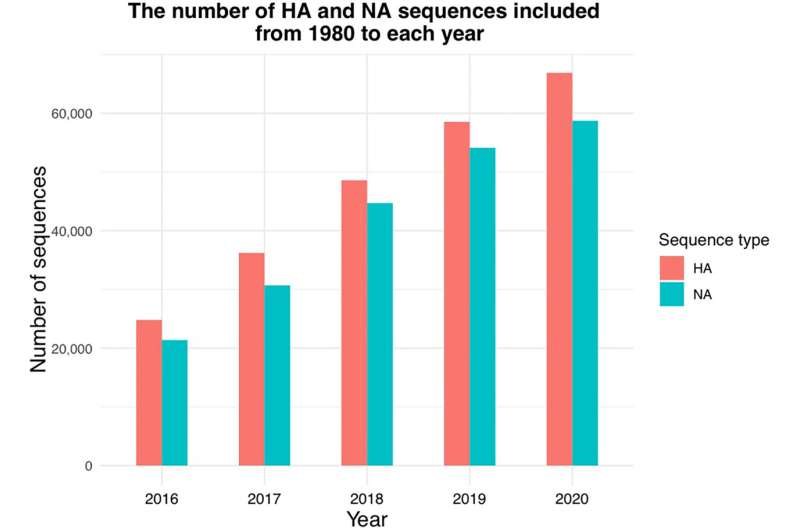This article has been reviewed according to Science X's editorial process and policies. Editors have highlighted the following attributes while ensuring the content's credibility:
fact-checked
peer-reviewed publication
trusted source
proofread
Learning more about how flu strains evolved may help guide future vaccine development

Simon Fraser University researchers studying the evolutionary history of flu viruses have found that a new quantitative analysis of how they evolved may help predict future strains. The research draws on a field known as phylogenetics, which focuses on how groups of organisms are evolutionarily related, and is published in the journal Science Advances.
Researchers used large phylogenetic 'trees' to predict which strains are most likely to grow during the upcoming flu season, and determined that this approach was moderately effective in detecting future strains of the influenza virus, and could be another tool in the toolbox to guide seasonal flu vaccine development.
"The COVID-19 pandemic has caused a significant change in influenza transmission dynamics," says mathematics professor and Canada Research Chair, Caroline Colijn. "We explored how machine learning can identify influenza virus sequences that are potentially good candidates for inclusion in seasonal influenza vaccines."
In order for vaccination to be successful, the specific viruses included in seasonal flu vaccines need to be similar to those influenza viruses that will circulate in the upcoming season, Colijn explains. The effectiveness of seasonal influenza vaccines varies (for example, ranging from 25–75% in children), and depends on whether the strains that circulate match those that were projected and included in the vaccine.
Researchers studied phylogenetic trees, essentially the family tree of the influenza virus, with information from the Global Initiative on Sharing Avian Influenza Data (GISAID). After creating phylogenies using over 65,000 RNA sequences from influenza's surface proteins, collected between 1970 and 2020, they used features in these trees to identify strains that were likely to rise in number in the coming season.
Seasonal influenza vaccine is designed to protect against common influenza viruses including H3N2, H1N1 and B. Their study focused specifically on the H3N2 subtype of influenza virus.
"We were able to identify similar candidate strains to those proposed by the World Health Organization, suggesting that this machine learning approach can help inform vaccine strain selection," says Colijn.
More information: Maryam Hayati et al, Phylogenetic identification of influenza virus candidates for seasonal vaccines, Science Advances (2023). DOI: 10.1126/sciadv.abp9185
Journal information: Science Advances
Provided by Simon Fraser University




















